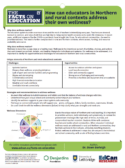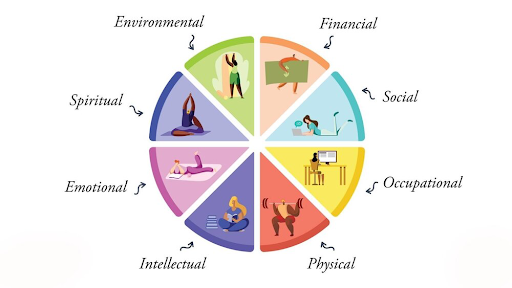How can educators in Northern and rural contexts address their own wellness?
Download the Fact Sheet! (750.18 kB / pdf)
DownloadWhy does wellness matter?
The education system is under enormous stress and the work of teachers is intensifying every year. Teachers are stressed, burnout is common, and rates of attrition are high due to rising mental health concerns and a work-life imbalance. In recent years, additional stressors like the COVID-19 pandemic have brought into focus, for educational communities, the need to prioritize wellness. This need is further compounded in rural and Northern contexts, where access, funding, and resource availability are scarce.
What is wellness?
Wellness is more than a yoga class or a healthy meal. Wellness is the intentional pursuit of activities, choices, and actions that work toward an optimal, holistic, and healthy lifestyle for individuals and systems. For wellness to be addressed, it is important to clarify the opportunities and challenges for educators in Northern and rural communities.
Unique elements of Northern and rural educational contexts
| Challenges | Opportunities |
|
|
Strategies and recommendations to address wellness
- Be aware that wellness is multidimensional and holistic and that the balance of wellness changes with time.
- Understand how your unique school and community context impact your wellness.
- Identify the wellness supports in your school system and community.
- Find ways to connect with people who will support you – peers, colleagues, Elders, family members, teammates, friends.
- Do a self check-in with the wellness dimensions (below) to help clarify what your strengths and needs are.
Wellness Dimensions
Due to the unique nature of Northern and rural teaching, it is important to prioritize wellness, both individually and systemically, to combat the predominant challenges like high rates of stress, burnout, and compromised teacher retention. Students thrive with consistent teachers and stable school communities. When educators’ individual wellness needs are addressed in rural and Northern communities, they facilitate wellness in their schools, ultimately benefiting students. Holistic wellness is addressed in ways that are unique to the individual and school community, with an aim of finding balance over time.
Additional information and resources
Resources
Link to dimensions with suggestions for additional supports and resources:
www.thessu.ca/dimensions-of-wellness
The Global Wellness Institute – for additional preventative wellness research and a broader international perspective:
www.globalwellnessinstitute.org


